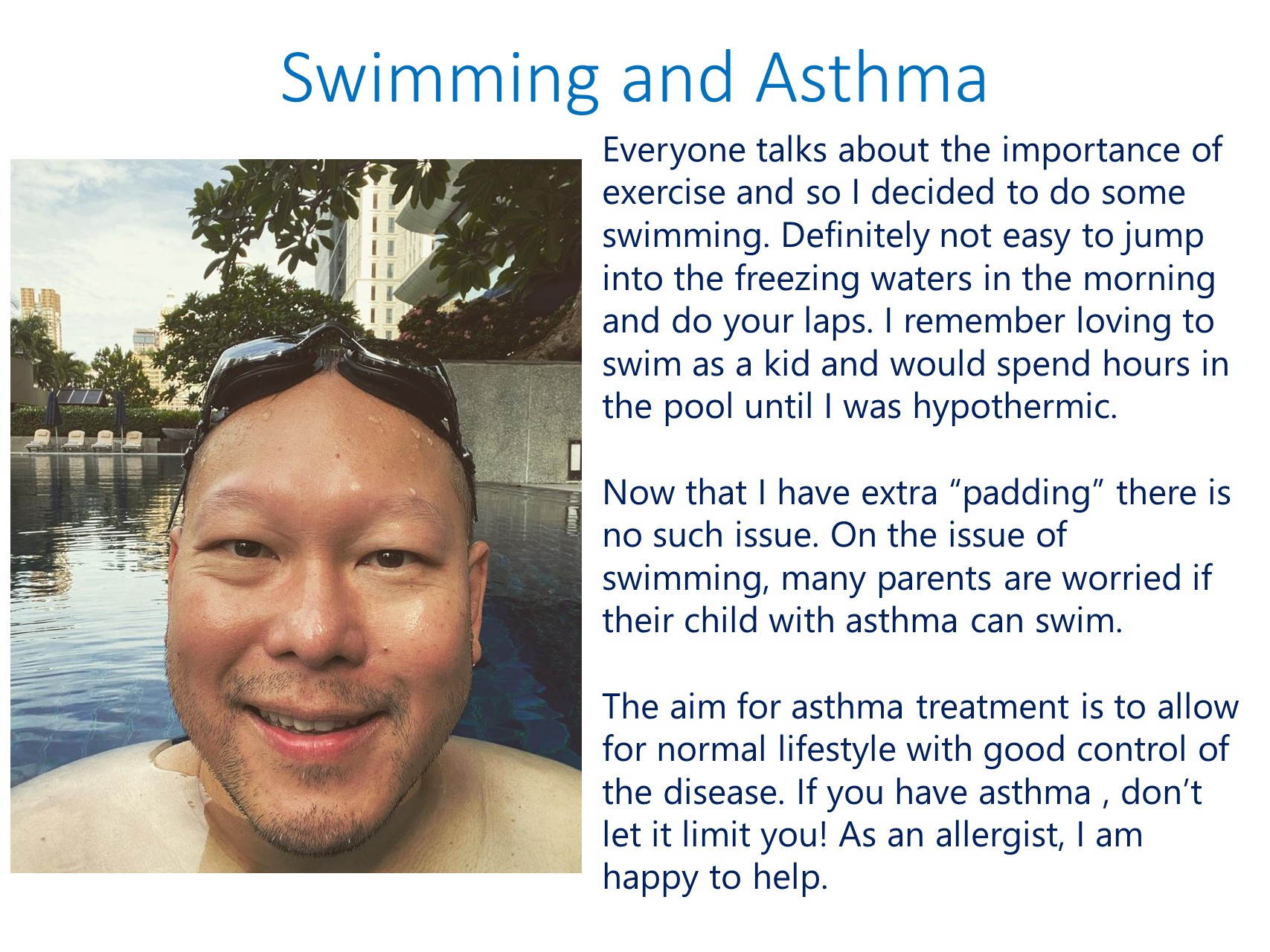Swimming with Asthma: Expert Tips to Stay Safe & Enjoy the Water
You love the water but your asthma doesn’t always agree.
Cold air, chlorine, and the sharp breathing during strokes can all spark an attack.
The good news? With the right prep and techniques, you can enjoy swimming without fear. Here’s how.
Why Swimming Can Trigger Asthma

Cold Water & Air: Your airways tighten when they cool rapidly.
Chlorine Fumes: Strong pool chemicals can irritate sensitive lungs.
Breathing Demands: Fast inhalations, breath-holding, and exhalations during strokes stress your airway.
Pre-Swim Prep: Set Yourself Up for Success
Take Your Rescue Inhaler 15–20 minutes before you jump in.
Warm Up on Land: Gentle arm swings and shoulder rolls get your lungs primed.
Choose Your Pool Wisely: If possible, swim in outdoor, well-ventilated pools or salt-water pools with lower chlorine/chemical levels.
Check the Water Temperature: Aim for pools around 28–30 °C (82–86 °F) to minimize cold-induced constriction.
In-Pool Strategies: Breathe Easy Underwater
Pace Yourself: Alternate easy laps with slower strokes to maintain steady breathing.
Focus on Exhalation: Blow bubbles continuously; a slow, forced exhale helps keep airways open.
Use Swim Goggles and Nose Clip (if helpful): Minimizes water ingestion and narrows inhalation triggers.
📌 If you feel uncomfortable for whatever reason: Chest Tightness, Coughing, Dizzy. Stop immediately! Climb out of the pool to recover and get your rescue inhaler ready.
Post-Swim Care: Guard Against Late-Onset Symptoms
Shower Off: Rinse chlorine from skin and hair to reduce ongoing irritation.
Dry & Warm Up: Remove wet swimwear promptly and cover up to avoid a chill.
Monitor Peak Flow: Track your lung function after a swim; note any dips.
Stay on Your Controller Meds: Continue daily inhaled corticosteroids—consistent control is your foundation.
🎯 Your Asthma-Swimming Action Plan
Plan Ahead: Know pool conditions and bring meds.
Communicate: Tell your swim coach or buddy about your asthma and rescue plan.
Listen to Your Body: Stop if you feel tightness or excessive coughing—and use your inhaler.
Review with Your Allergist: Adjust your action plan based on your experience in the water.
Don’t let asthma keep you from one of the best workouts and stress-busters out there. With these tips—and a strong partnership with your allergist—you can enjoy every swim, every splash, every stroke.
📌 Ready to master swimming with asthma? Schedule your asthma review at the Allergy Immunology Clinic and dive in with confidence!




